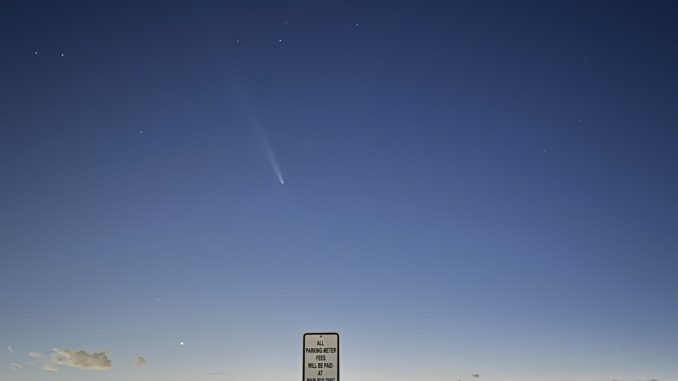
There have been a number of astronomical events over the last few months. From comets to a solar storm, the skies have been alight with rare sights.
Many people were able to see comet C/2023 A3 Tsuchinshan-ATLAS as it passed by earth, either unaided or with binoculars or a telescope. NASA originally reported that it would return in approximately 80,000 years, but new data shows that it may pass out of our solar system altogether. “It was naked eye for at least two weeks and then for about another two weeks it was easily seen with binoculars,” said Steve Bellavia of the Custer Observatory. “It [was] still brighter than a lot of other telescopic objects; people buy telescopes to look at star clusters or Nebula or galaxies, and this is still brighter than a lot of those. So it [was] a good telescope object.”
Another comet visible in the southern hemisphere passed too close to the sun and paid the price. The Solar and Heliospheric Observatory [SOHO] spacecraft took videos of C/2024 S1 (ATLAS) coming in towards the bottom of the sun and then coming out in pieces. “these sun grazing comets, there is a huge percentage of them that don’t make it. A lot of comments dive into the sun or break up going around it. So it’s not that unusual,” said Mr. Bellavia.
Solar storms are currently on the upswing, with the peak of activity expected in 2025. This means there is the strong potential for another aurora event such as the one we experienced last month. Visit https://blogs.nasa.gov/solarcycle25/ for the most recent updates from NASA on this phenomena.
Other upcoming events include the last supermoon on Friday, November 15. A supermoon is when the fullest phase of the moon coincides with perigee, which is when the moon is closest in its orbit.
The Leonid meteor shower is also in November, with peak viewing the night of the 17th and morning of the 18th. Light from the supermoon will block out all but the brightest meteors this year. Meteors will appear to radiate from the constellation Leo, but may also be anywhere in the sky.

